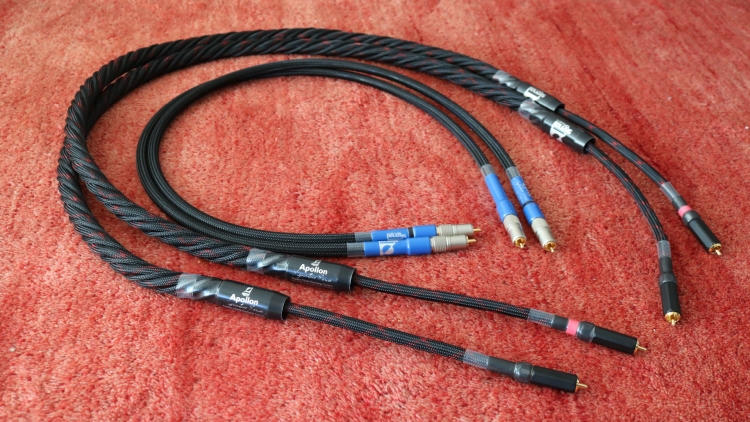
Connectors
A glance at the company’s website shows black instead of blue shrinkwrap for the Lynx and different connectors for the Apollon but please note that the versions that I am reviewing are the current models.
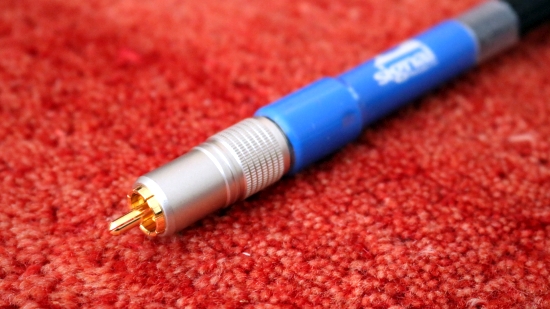
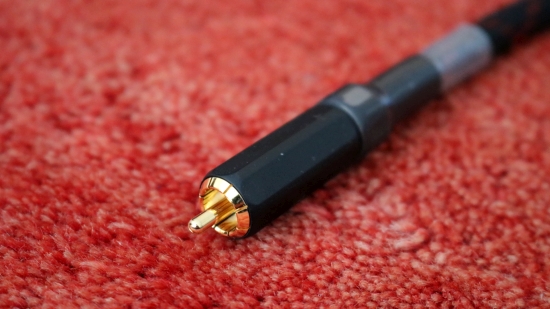
One problem with connectors is manufacturers who deviate from the normal specs and make plugs with thicker pins than normal, supposedly to make an extra-good connection. What this can yield, are worn-out female connectors that can have trouble making a good connection once they are married with a standard plug after years of use with over-specified ones. It’s rare but it has actually happened to a few components during my time in audio so far. Fortunately, the Signal Projects cables’ connectors adhere to the standards.
According to Wikipedia, the male plug has a center pin that is 3.175 mm (1/8 inch) in diameter and is surrounded by an outer shell that is 8.25 mm (1/3 inch) in diameter. As it happens, the Signal Projects connectors adhere to this precisely with respectively 3.1 and 3.2 mm for the Lynx and the Apollon.
Confusingly, across a wide range of my own components, both used and brand new, as well as with components tried at a friend’s place, I’m finding that the Signal Projects connectors make a somewhat loose fit while the thicker, non-standard 3.3 mm for both the Vermouth and the AudioQuest connectors seem to make a perfect fit. Could it be that the industry as a whole has adopted looser standards in female connectors?
Both Signal Projects cables have locking collars which means you can easily slide the connector on and then tighten it. I generally like locking collar RCA plugs and the ones supplied with Vermouth and Transparent Audio cables set the example. Alas, the ones provided with both Signal Projects cables don’t make as solid a connection as I would like.
The ones supplied with the Lynx don’t really tighten around the RCA as well as I would like but they work smoothly and look and feel very solid, and, importantly, they have the kind of quality that I expect at the price. The Furutech connectors supplied with the Apollon also look and feel solid, but they, too, provide a loose grip. And contrary to the Lynx’ connectors, I can’t tighten the Furutechs enough to make them grip the female connector firmly enough. Maybe the conductor material is too strong to be effectively compressed? This, combined with a relatively loosely-fitting center pin makes that, even at its tightest, the plug can still be pulled out with ease from nearly all components.
The only exception to this was a friend’s Spectral DMC-30 SV preamplifier that employs larger than average connectors and with which the Fire’s connectors even made an overly tight match.
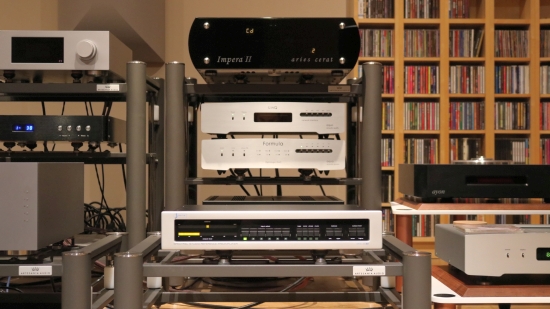
The Spectral DMC-30 SV preamp has larger-diameter connectors than all other components but besides checking this, it was not used in the context of this review. More about the Spectral will be published in a future review.
With all that said, I should add that I am also not entirely happy with the connectors that are fitted to the AudioQuest Fire cables. While the simpler connectors on the lower-end Water cables make a great connection and have proven to continue to do so after years of use, the massive “hanging silver” connectors on the AudioQuest Fire look the part but quickly lose their grip after having been used for mere months.
In closing this little rant, I will add that if there is a detrimental effect from loosely-fitting connectors, still, it leads to the superb sound as described. So, my grumbly comments are probably best taken with a grain of salt. Also, I should also note that both Signal Projects cables have very well-implemented strain relief. The cables are attached exceedingly well to the connectors meaning that they should easily stand the test of time.
Conclusion
The Lynx has a sound that is the antithesis of analytical. As such, it’s not the most revealing or transparent. Rather, the cable’s liquid delivery is consistently of the forgiving kind, making very nearly everything sound sweet and pleasant. Depending on the individual’s taste or system needs, that will be a desirable or non-desirable quality.
The Apollon has the almost exact same kind of delivery as the Lynx but with improved definition, linearity, transparency, and expression, to make for a cable that is well-detailed yet also forgiving. The Apollon is exceedingly well-balanced, refined, tonally rich, and even more deeply saturated than the Lynx, and still smooth but also well-textured, open, detailed, energetic, and remarkably lively. Indeed, in the right system, the Apollon provides a hugely seductive sound like no other cable.
External Links
Distributor for the BeNeLux: Ultisone
Manufacturer’s website: Signalprojects
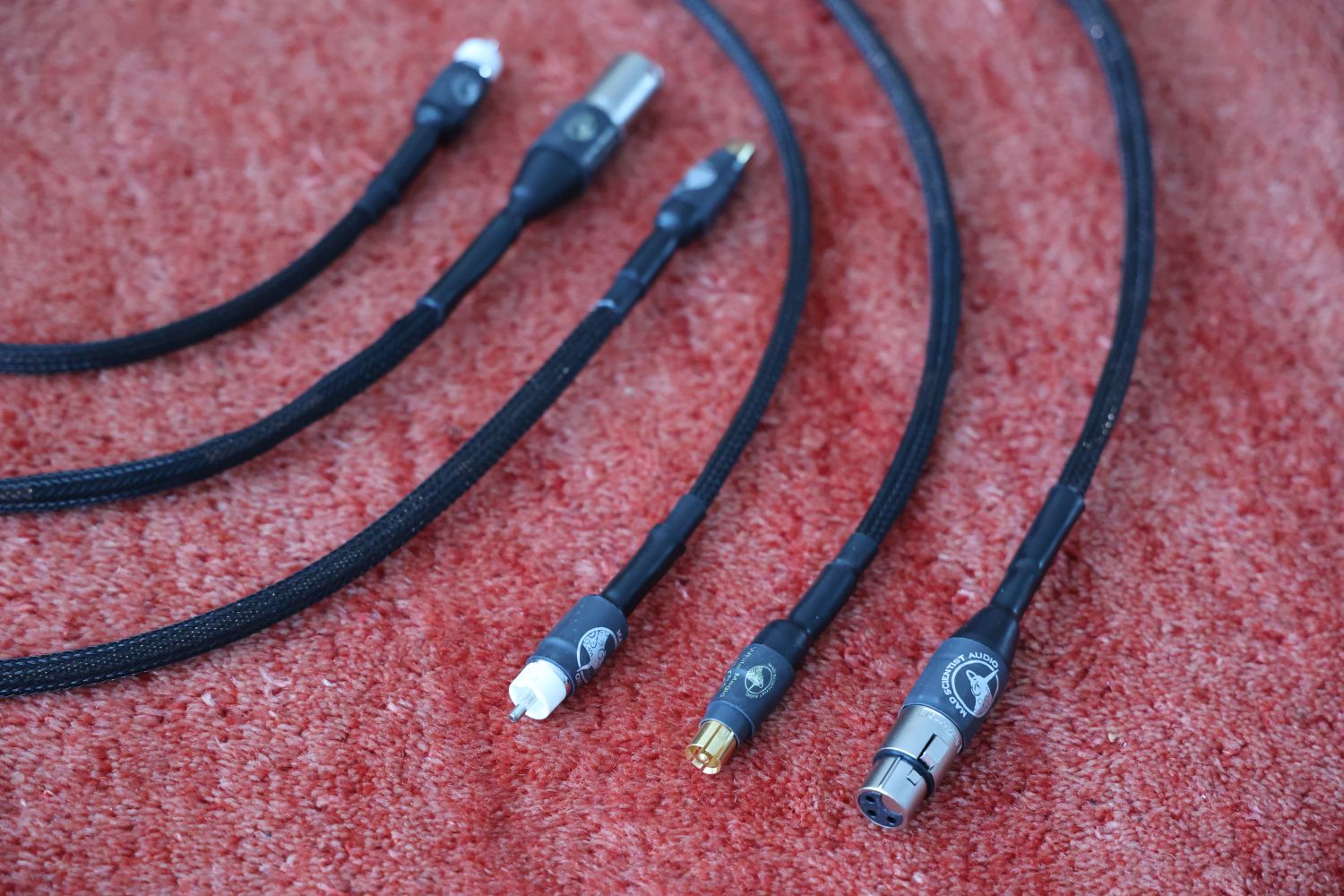
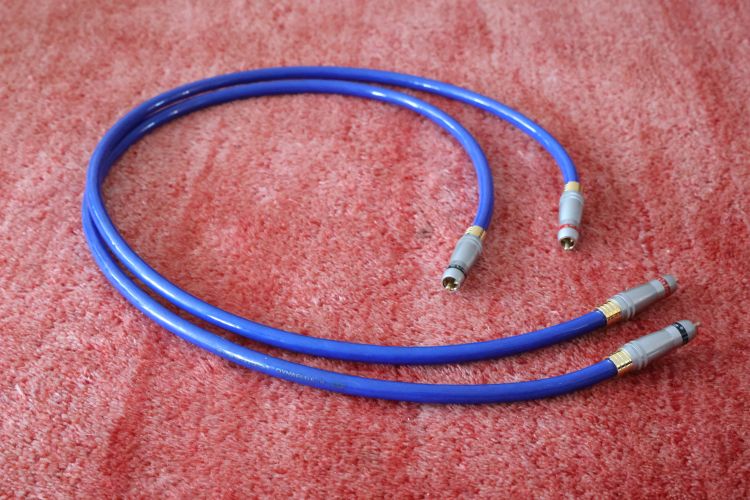

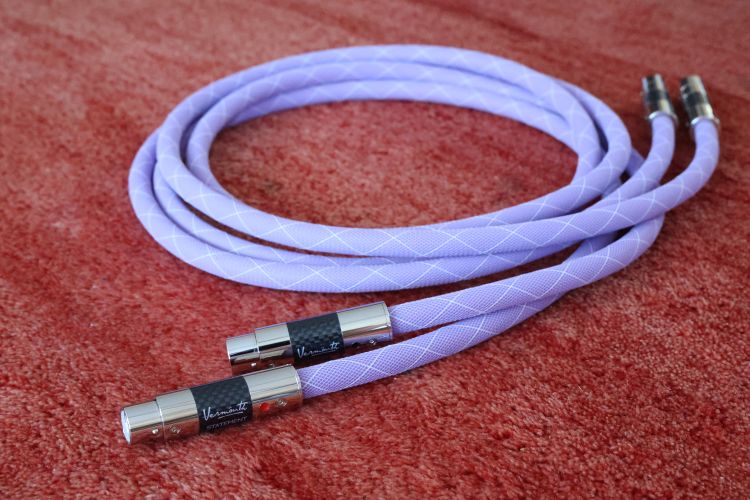
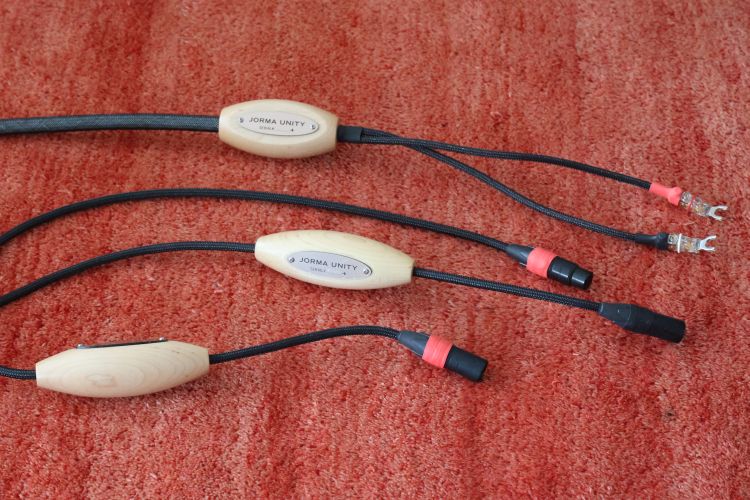
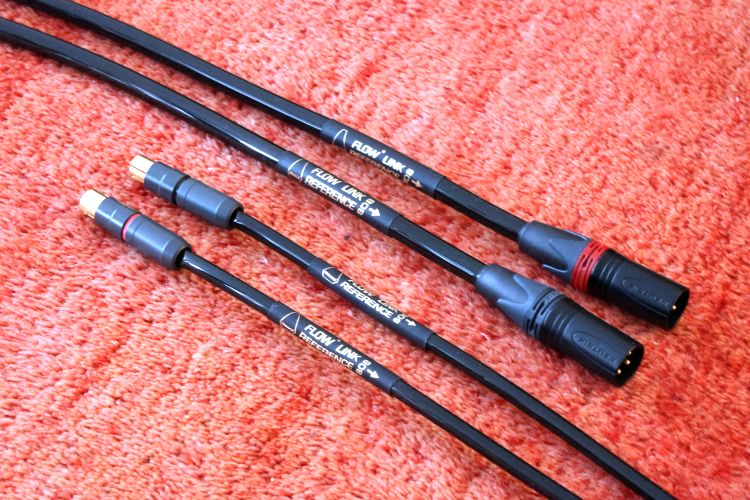
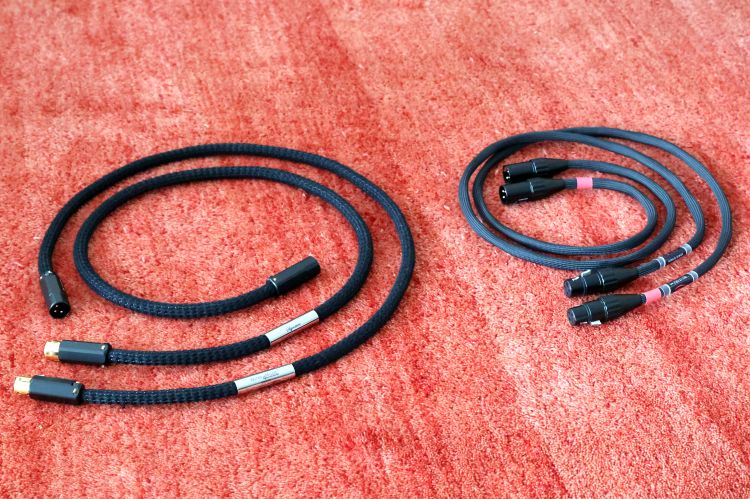
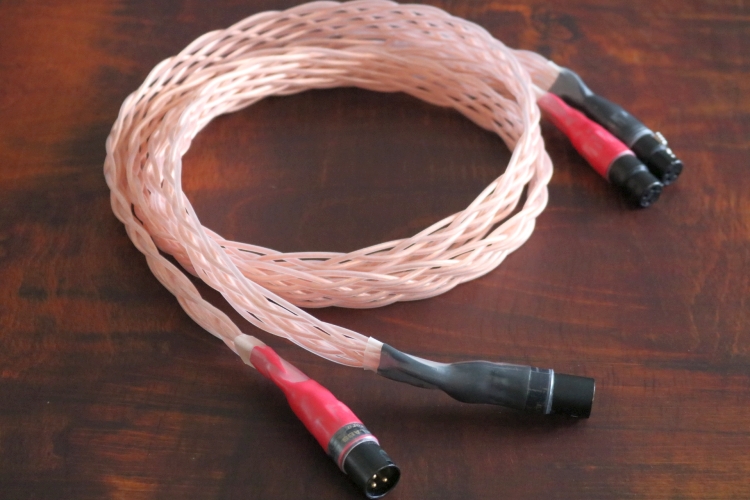
In your review of the Signal Projets Lynx, you state:
“Substituting the Driade cable for the AudioQuest Water, a long-standing old favorite, makes for a substantial shift”.
This is, for me at least, a very confusing statement. Given the context, I believe you mean:
Either “Substituting the AudioQuest Water for the Driade cable” or “Replacing the Driade cable with the AudioQuest Water”, both of which formulations have the same meaning.
Your formulation suggests, on the other hand, again for me at least, exactly the opposite, that you were listening to the AudioQuest Water, and then you tried the Driade cable after that.
My apologies in advance for a very minor linguistic point. I believe, however, that clarity helps your narrative, which is a very good one.
By the way, for your information, I am comparing, in my system, the Signal Projects Avaton USB cable with the Shunyata Omega USB cable. Very different sound, both outstanding cables, I’m hesitating, can’t make up my mind. My head tells me to keep the Shunyata Omega, but my heart tells me to replace this with the Signal Projects Avaton. I will make a decision in the next few days.
The Avaton is very dynamic, makes concertos and symphonies sound “larger” and “grander”, which is great for these types of classical music, and, more generally, is very, very musical. Amazing, if pricey, cable.
Hi Ronnie, you raise a good point! Upon re-reading, I see that I used “Driade” where I should have used “Lynx”. The sentence should have read “Replacing the Lynx for the AudioQuest Water, a long-standing old favorite, makes for a substantial shift.” Thanks for the hint, I always appreciate it when issues are pointed out and I have a chance to clarify the message. I have now amended this in the article.
Regarding your current USB cable decision. Oh, how I am familiar with matters of the heart and the head and how they are often contradictive… My advice would be to play as much music as you can in the available time and to make sure that you listen to all your preferred music styles.
Christian,
Another thorough review and interesting discussion of connector pin sizes something that’s never occurred to me before. Also Happy New Year!
On the subject of head vs heart it is a difficult choice because these cagey cable makers only ever combine the two in their top models. 😉
Cheers,
Jon
Ultimately, the head and the heart agreed: the top of the line Shunyata Omega USB cable was better overall in my system, and, somewhat surprisingly, more musical. The likewise top of the line Signal Projects Avaton USB cable was a fascinating cable, very exciting, dynamic, resolving, and lush, all at the same time (which seems to be a contradiction in terms), but perhaps too much so, likely indicating a deliberate choice of that kind of sound (which some others might prefer in their systems). Surprisingly, given the overall “lush” sound, I also noticed a somewhat “hot” upper midrange and treble, which could perhaps disappear after further run in (I ran it in for around 60 hours). The lower levels in the Signal Projects range (such as Apollon) may actually have a more neutral and “better” overall sound, as well as being more reasonable in terms of pricing.